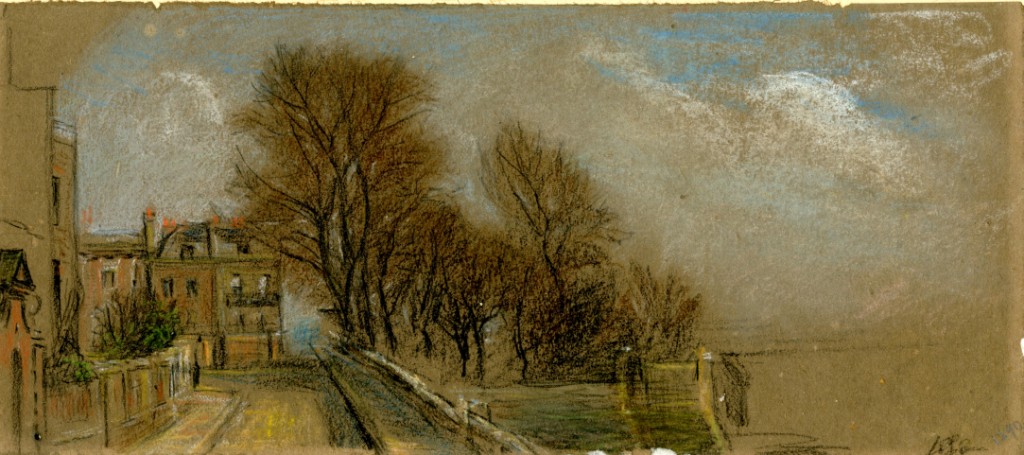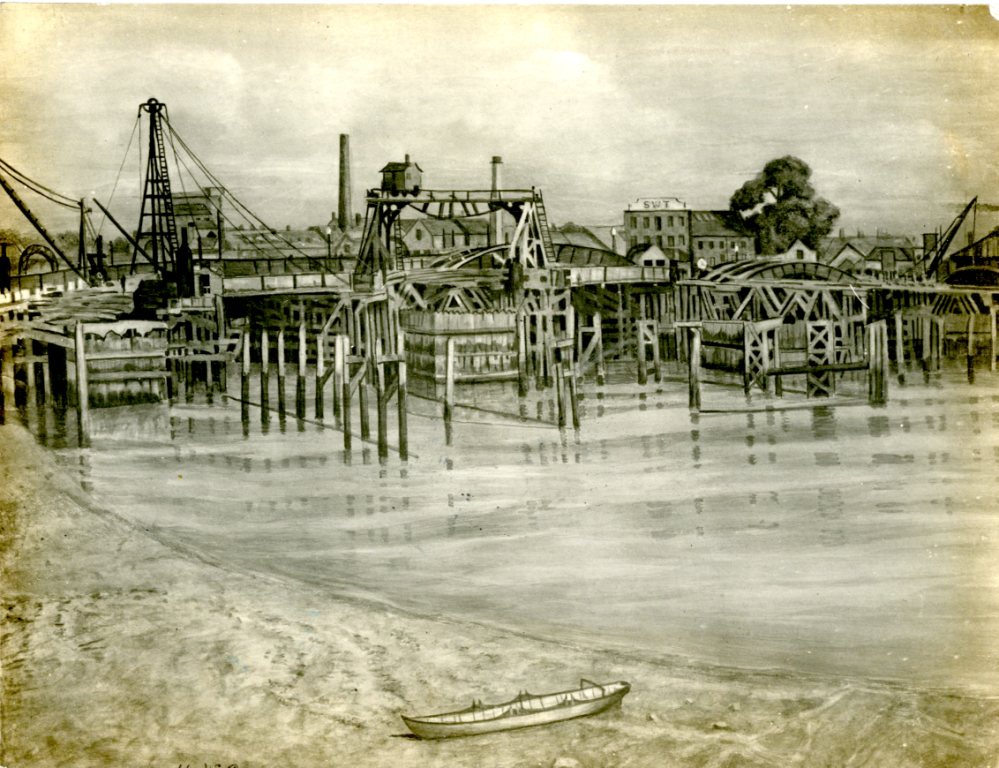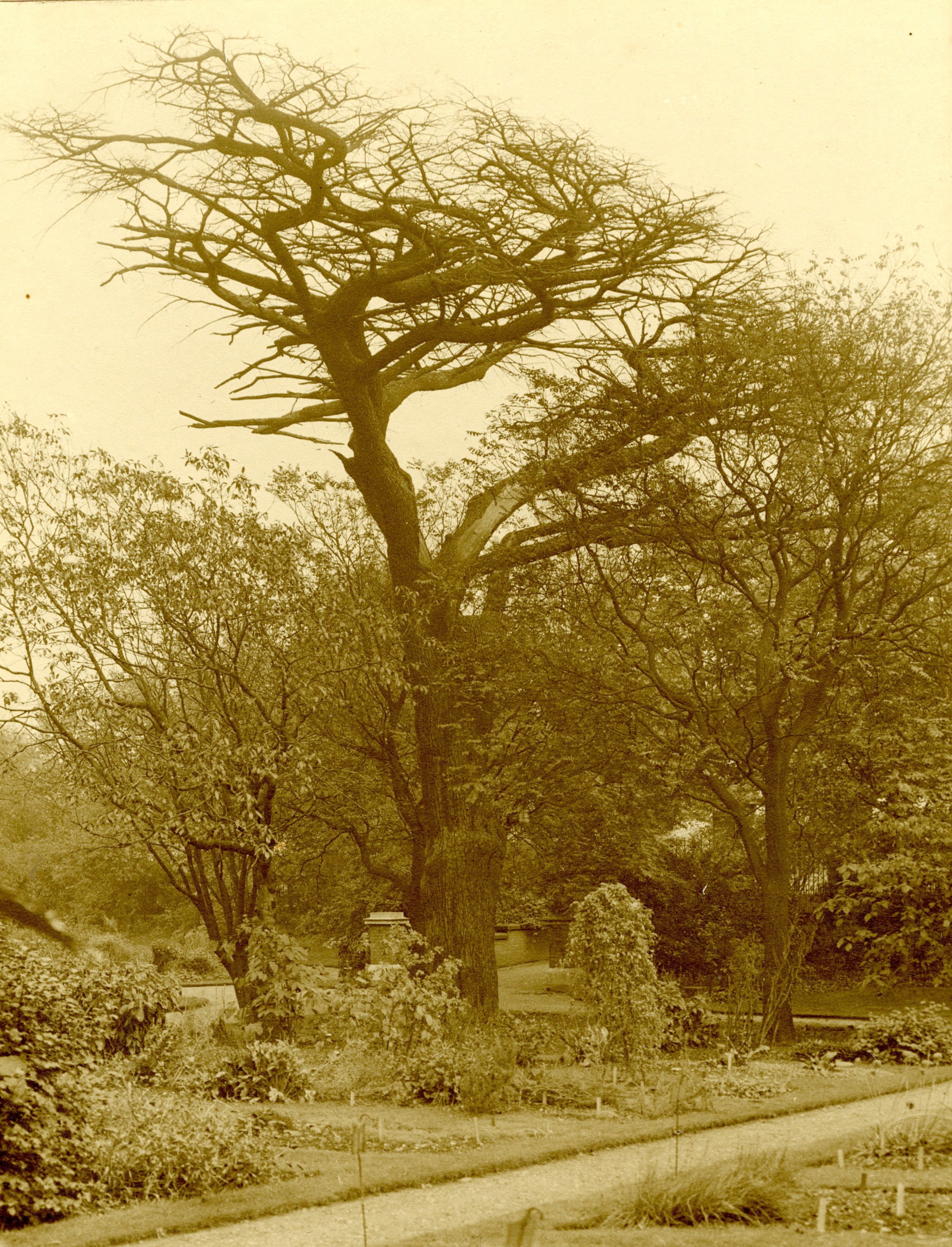Anyone interested in the history of Chelsea has probably heard of Walter Greaves. But you won’t have seen much of his work on the blog. This is largely for technical reasons. We have quite a few works by him in the collection but many of the best are too large or in some cases too delicate to scan. The rest are often sketches or unfinished works which don’t convey how good he could be at times. He was an amateur who didn’t always have the time or the materials to achieve great work. But recently, we’ve been stock checking the art collection and I’ve had a chance to look again at his work and I’ve come to appreciate it more.
First however, let me show you one of his best works, which was photographed professionally in 2012.

[“Unloading the barge” presented by Lord Northcliffe to Chelsea Old Town Hall ]
For those of you who don’t know much about Greaves, here is a summary.
Walter Greaves grew up in the west part of Chelsea with his father and mother, a couple of brothers and a couple of younger sisters. George Greaves ran a boatyard which built, repaired and offered boats for hire. One of his customers was a mysterious old gentleman who lived a few doors away who turned out to be Joseph Mallord Turner living incognito with just a housekeeper for company.(As seen in the recent film) His identity was almost unsuspected. On the other side of the Greaves’s house lived John Martin the painter of enormous pictures depicting apocalyptic landscapes. So the young member of the Greaves family were brought up in an artistic as well as a nautical atmosphere. When Walter and Henry were teenagers, a new neighbour came to live nearby, James McNeill Whistler.

[Photograph of a Greaves picture of Whistler at work.]
Jimmy Whistler became a friend of the whole family, using their boating services but also enrolling Walter and Henry as acolytes and (mostly) unpaid artistic assistants. He introduced them to the artistic world, and they introduced him to the pleasures of the riverside, including Cremorne Gardens which was also in the immediate vicinity. There were many decorous and educational pursuits and wonders there, as well as dancing and other licentious activity.

Walter and Henry were both teenagers when they met Whistler and fell under his influence. Tom Pocock’s book about Greaves and Whistler is subtitled “The brutal friendship of Whistler and Walter Greaves”. Although it was Whistler’s dominance over the brothers which made them more serious about art, he never really allowed them to step out of his shadow. For many years he was like a family member and he was a frequent visitor to the Greaves house, as was his mother and mistress (separately, I assume). He was close to Alice Greaves, although whether she was another mistress is not known. The friendship lasted longer than many of Whistler’s but eventually he dropped them. The greatest animosity came from Whistler’s eventual biographers, Joseph Pennell and his wife.
I was left with a feeling of melancholy, reading about how Greaves and his family were treated but the pictures themselves show how the Greaves brothers, while under the spell of Whistler, forged their own artistic identity which was as much the result of their love of Chelsea as their lives as friends and pupils of the Master (as some saw him).

Sometime Whistler’s sartorial influence on the brothers was such that it could have been the man himself, or Henry, or Walter who appears in this picture. Who ever he is, he in many of the pictures, even as a passer-by as in the one below.

Greaves also tackled the traditional subject of all Chelsea artists, the riverside. He turned out small sketches like the one below constantly, and kept sketching well into old age.

We’re going to linger awhile at Cremorne though, in happy days for the Greaves family and their friends.

Walter, Henry and Alice (“Tinnie”) frequently feature in the pictures, with Jimmy as well sometimes.

[Photograph of a Greaves painting]
Walter and Tinnie sharing a bottle of beer at the table , Whistler by the fountain
Below, part of one of Walter’s larger drawings.

That could be Walter, possibly carrying his portfolio, on the left.

[Another photograph of a Greaves painting]
After he was dropped by Whistler, Greaves, made some efforts to meet his former mentor but was usually rebuffed. Walter and Henry were not invited to Whistler’s funeral. They observed part of the proceedings leaning against the embankment wall. This sketch was one his attempts to capture the event.

In his later years, short of money for himself and his sisters, Walter was reduced to hawking his pictures round the streets of Chelsea and doing impromptu portraits in public houses. Many of his best pictures were sold off cheaply, the frames having been used for firewood. But he did enjoy a brief revival in the early 1900s when a dealer acquired some of those painting and cleaned them up. There was an exhibition and proper sales. The dealer started paying Walter a weekly stipend. This fifteen minutes of fame (or three weeks as Pocock depicts it) was marred by attacks in the press and accusations of plagiarism. This hurt Walter but he also had supporters. There was a dinner for him at the Chelsea Arts Club where he was presented with a cheque (for £150, more money than he had ever seen). He ended his days comfortably, in a charitable institution in the City (only a motor-bus ride from Chelsea) having been finally recognized as an artist in his own right. He lived to see his early painting of Hammersmith Bridge on Boat Race Day bought for the nation, and you can still see it in Tate Britain.
John Rothenstein put him in his 1928 book Painters of the 1890s “Greaves was not only one of the most important artists of the period, but one whose painting and personality contrasted more sharply with Whistler’s than did those of any of his contemporaries……the similarities were accidental while the differences were essential. ….this aged man, one of the great artists of his time..sitting alone and forgotten..sketching old Chelsea from memory because he ‘couldn’t pass the time without it’.” The chapter on Greaves sits along others about Beardsley, Sickert, Conder and of course Whistler
Finally, another one of his best pictures, still owned by the Council.

Postscript
Another reason why I never wrote much about Greaves before now was that I was afraid I wouldn’t do him justice. I’m still not sure about that, but here he is before it’s too late. I’m going to come back to some of the photographs and postcards of Greaves picture, of which we have many, in a future post.
This post is dedicated to the late Tom Pocock, a friend of Chelsea and the Local Studies collection, and to a former colleague of mine, Ann Holling, who was obsessed with Greaves a long time before me.



















































































































